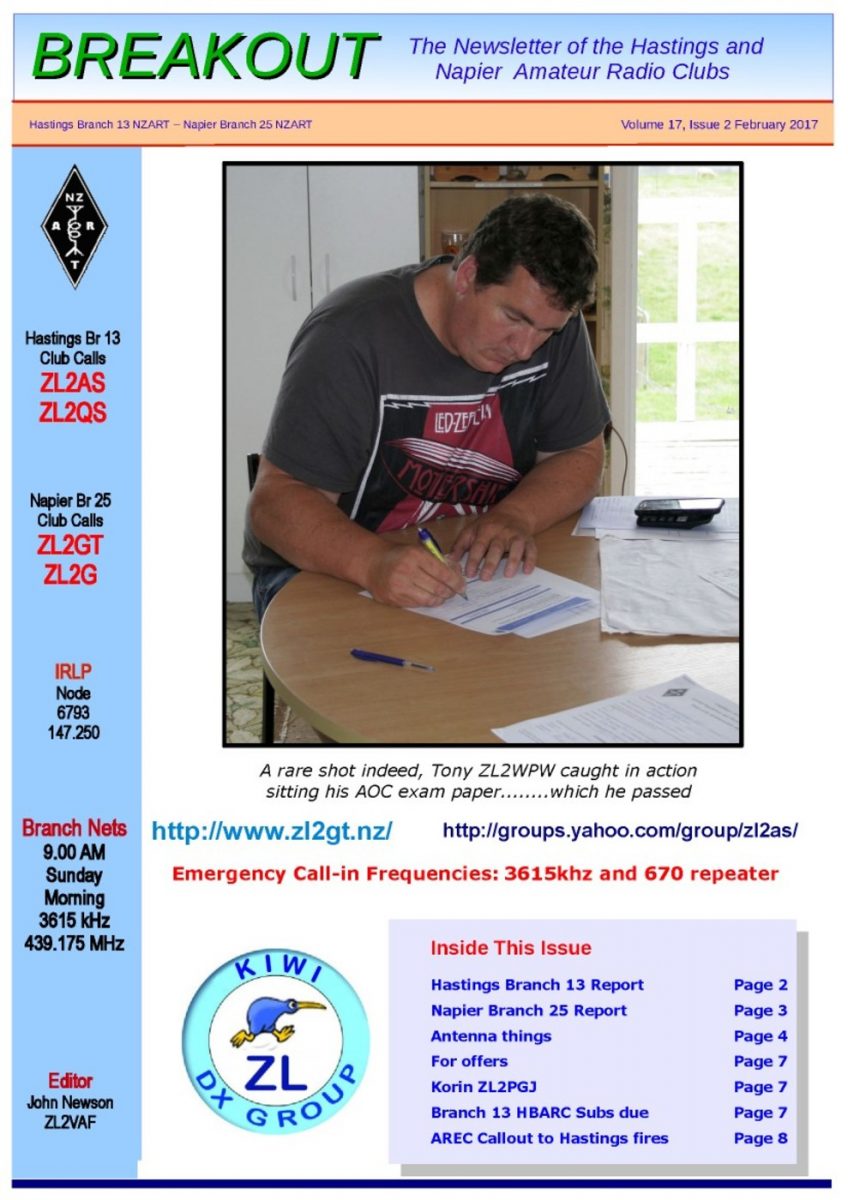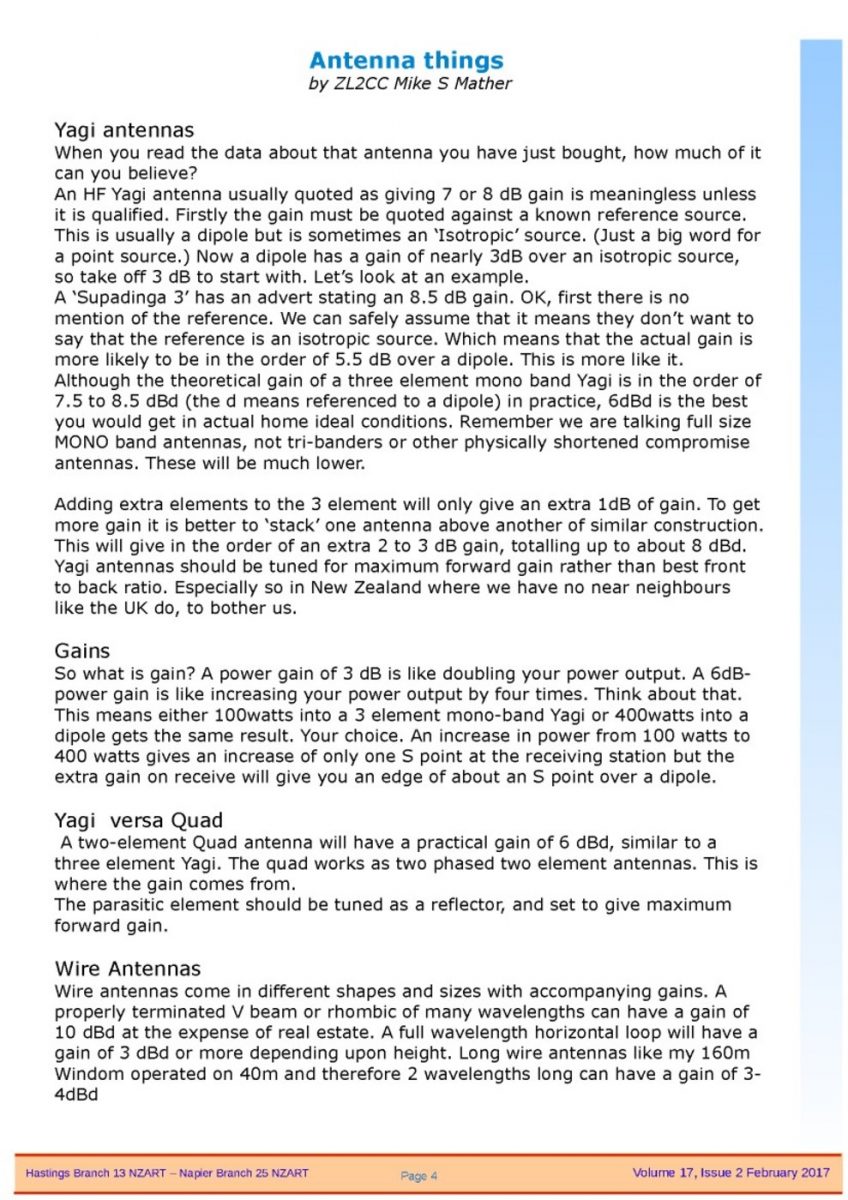Hastings Branch 13 NZART – Napier Branch 25 NZART Page 3 Volume 17, Issue 2 February 2017
NAPIER BRANCH 25
President: Dave Crook ZL2MQ, 021 0296 9006 email [email protected]
Secretary: Karl Matthys ZL1TJ 845 4372 email [email protected]
Treasurer: Stan White ZL2ST 843 7236 email [email protected]
AREC: Mike Bull ZL2VM 843 6052 email [email protected]
Committee:
Michael Mullins ZL2MY 843 4210 email [email protected]
Revell Troy ZL2SS 0210742837 email [email protected]
Peter Breen ZL2CD 0274721527 email [email protected]
Wally Shuker ZL2MO 843 5497 email [email protected]
Paul Cavanagh ZL2HB, 843 1977 email [email protected]
Committee Meetings: 7:30 pm, 3rd Tuesday of January, March, May, July, September, November
Club Calls: ZL2GT, ZL2G
Club Web Site: http://www.zl2gt.nz/
Club Nights: First Wednesday each month (except January) 7.30pm at the Club Rooms:
123 Latham Street Napier
Napier Amateur Radio Club
Rain seems to be dogging all the Summer fun in Hawkes Bay. First the cricket cancellation, including a second game against the ZS’s, now continuing into the Art Deco activities, although the weather isn’t really affecting anything looking at the crowds in Napier Town at the moment. The no go of the airshow being the biggest disappointment to me personally.
6 metre activity has slowed, with only a few VK contacts for February so far. My EME activities on 2M are also curtailed temporarily due to a bright blue / green flash that completely vapourised one of the output tabs of my high power FET. I’m waiting for parts from Jim W6PQL, which although only took 2 days from USA to NZ have taken a further 10 days (so far) to get to me, I’m hopeful for tomorrow. I wonder if this is in part the problem with NZ POST?
I got a bit of a wind up about not appearing on the VHF bands for the 11/12th of February field day, and wonder if anyone else was there. My own fault of course, and now have joined the yahoo group “zlvhfgroup” to try and keep up with the news of these events. The dates are also available on the NZART site.
A date has been set for the final coat of paint on the club rooms and that is Thursday 23rd February at 9am, hopefully a large turn out can get this done in a few hours. Bring a brush and a paint container and join the fun. Hopefully the weather will be kind.
The Branch Project for this year is an ARDUINO based SWR bridge, and we would like an indication as to numbers and price expectation, as well as preferred frequency range and power levels, let me know about this (and any other Napier Club enquires [enquiries]) on [email protected].
Our March meeting will include a general discussion on “where to from here” especially for new and fairly new hams, who are all welcome, the expected discussion will centre around operating procedures, how to learn CW, how to set up a station and anything else pertaining to Amateur Radio. If you know a new or prospective new ham, please invite them.
See you on the 23rd and again on March 1st.
73 de ZL2MQ



















Do you know something about this record?
Please note we cannot verify the accuracy of any information posted by the community.